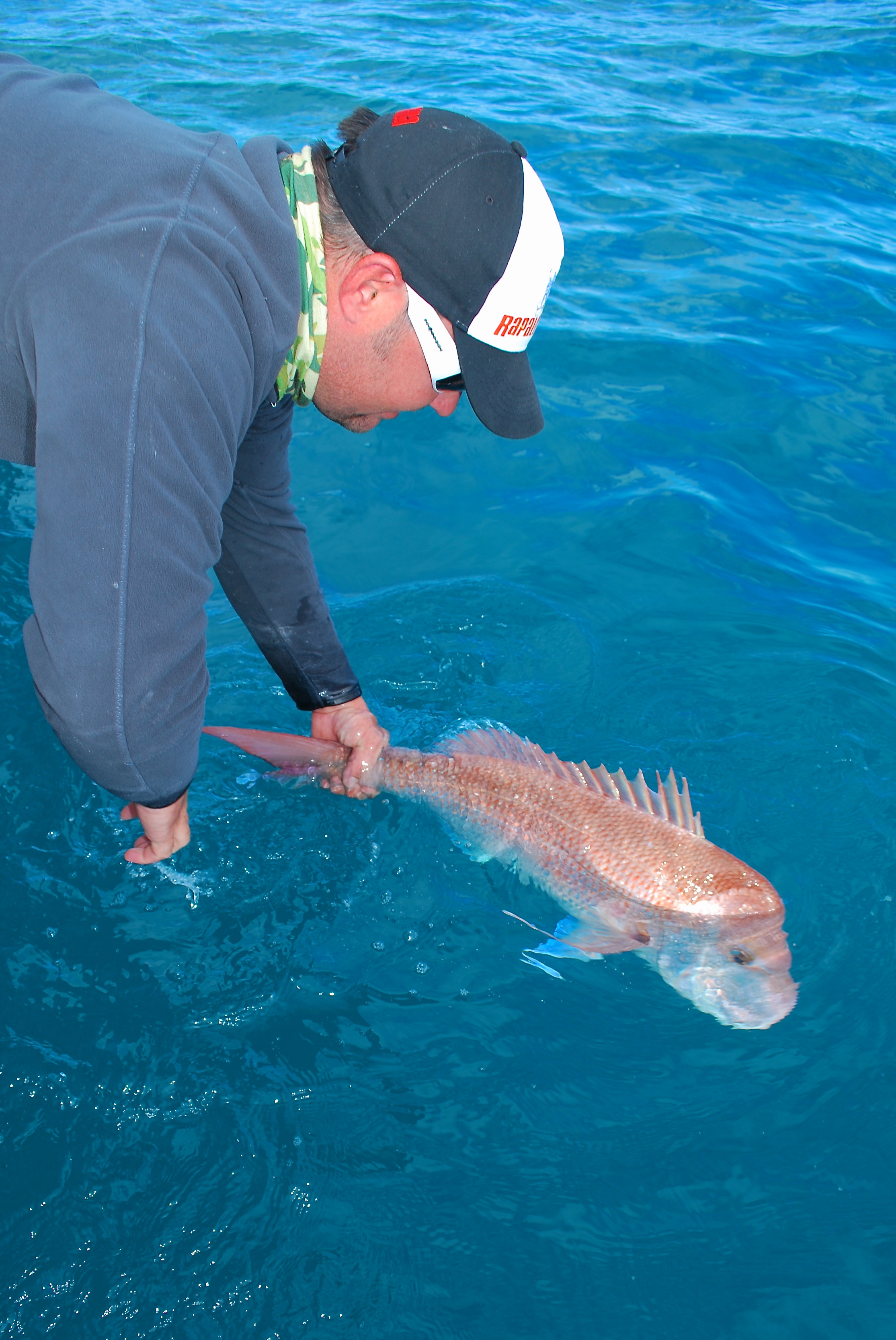With the increasing fishing practice of catch and release fishing for Snapper, it is important to understand the best techniques to maximise fish survival.
Whether you’re a fisher with a strong conservation commitment to release the fish you catch, or an angler abiding by size, bag and boat limits, the reasons for catch and release fishing are varied. With the Snapper season now underway PIRSA in association with RecFish SA have developed the following advice about responsible handling techniques.
Recreational Snapper fishers can increase survival rates of released fish by following these tips:
- Fish in shallower water to minimise barotrauma.
 Closed bladder fish such as Snapper, Mulloway and Perch can suffer barotrauma when caught from depths greater than 10m due to rapid changes in pressure when they are brought to the surface. While there may be no external signs, the damage caused by barotrauma can result in internal injuries, death or affect their ability to breed. Fishing in shallow water reduces the chance of barotrauma and also offers a more exciting and challenging fishing experience.
Closed bladder fish such as Snapper, Mulloway and Perch can suffer barotrauma when caught from depths greater than 10m due to rapid changes in pressure when they are brought to the surface. While there may be no external signs, the damage caused by barotrauma can result in internal injuries, death or affect their ability to breed. Fishing in shallow water reduces the chance of barotrauma and also offers a more exciting and challenging fishing experience.
- Leave Snapper in the water to de-hook wherever possible. De-hooking the fish without touching it increases survivability as extended air exposure is harmful to fish intending to be released.
- If you are going to lift your Snapper from the water and intend to release it, ensure the body weight and spine is supported (eg. use a knotless net) and return to the water as quickly as possible. Using wet hands is recommended to reduce the risk of harm to the fish’s protective coating. Do not place the fish on hot surfaces such as the boat deck or rocks.
- Select appropriate hooks and rigs for catch and release. Gut or gill hooking can cause serious harm to fish and in many cases is the biggest contributor to fish mortality after release. The use of lures or bait rigs with circle hooks maximises the chances of a hook set in the mouth of the snapper, this provides the fish with better prospects for survival.
- Choose tackle that will land your target fish in the shortest time possible and release fish in the best condition. Avoid long playing times that exhaust fish and can cause delayed mortality. The stress and exhaustion placed on a fish during the fight to catch it will reduce its chance of survival if released.
 Please note that it is illegal to target, take or be in possession of any Snapper in the Snapper spawning spatial closures between midday 15 December and midday 31 January. For more information visit www.pir.sa.gov.au/fisheries\
Please note that it is illegal to target, take or be in possession of any Snapper in the Snapper spawning spatial closures between midday 15 December and midday 31 January. For more information visit www.pir.sa.gov.au/fisheries\
It’s also important to remember, high grading of fish is illegal. If you catch your limit of legal size fish and continue to catch more of that species, by discarding previously caught fish – dead or alive – you risk a maximum penalty of up to $5000 for a first offence.
By following these practices you can help support the sustainability of our Snapper fishery and ensure the rewarding fishing opportunities that we enjoy today can be maintained for future generations to experience.
RecFish SA is the recognised peak body representing South Australian recreational fishers. PIRSA works closely with RecFish SA to foster recreational fishing opportunities in South Australia, which includes providing educational fishing information and advice to more than 236,000 recreational fishers across the State.
You can download this fact sheet as a pdf: Fact sheet – Helping Snapper survive
Image(s) courtesy of Lubin Pfeiffer & Shane Murton.





